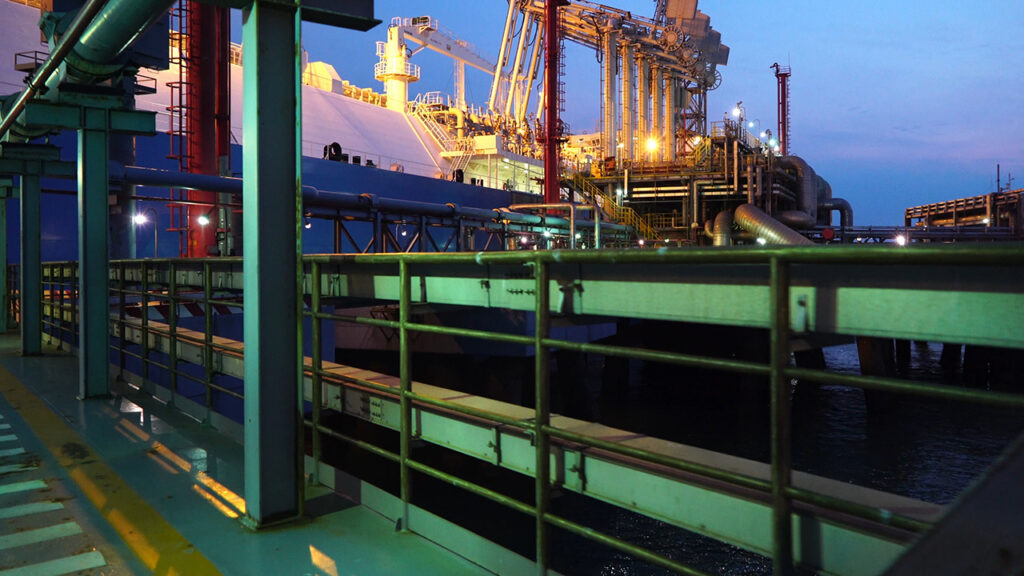Marine Insurance Case Update 4
High Court, Court of Appeal and Supreme Court Cases, July 2013 to March 2014 Update 4
Welcome to the fourth of our HFW Marine Insurance Case Updates which are produced on a six monthly basis. The Marine Insurance Case Update aims to provide you with regular summaries of English Court cases relevant to the law of marine insurance including hull, war and cargo risks. We will also seek to include other cases which may be of interest in terms of procedural decisions, for example service out of the jurisdiction or anti-suit injunctions.
This Marine Insurance Case Update forms the basis of a presentation and we have already been to many of you to discuss these cases.
In this edition we look at the provision of Club letters of undertaking to constitute a limitation fund in the English High Court, a fresh look at the meaning of perils of the sea and a landmark decision of what constitutes an “unsafe port”.
We hope you find the update useful and should you have any questions, then please do not hesitate to contact us.
Sea Glory Maritime Co and Another Company v Al Sagr National Insurance Co [2013] EWHC 2116 (Comm)
High Court: Mr Justice Blair
Mr Peter MacDonald Eggers QC and Ms Nichola Warrender (instructed by Hill Dickinson LLP) for the Claimant
Mr Ravi Aswani and Mr Andrew Leung (instructed by Clyde & Co LLP) for the Defendant
Facts
The Owners of the NANCY sought an indemnity from their hull underwriters after a fire rendered their vessel a constructive total loss. The underwriters declined the claim and sought to avoid liability under the marine insurance policy arguing that:
- There was a misrepresentation or non-disclosure as to the true manager of the vessel.
- There was a non-disclosure in respect of port state control detentions.
- There was a non-disclosure in relation to a conflict of interest.
- There was a breach of an ISM warranty.
- That the claim was tainted by an illegality under US Iranian sanctions law arising from the issuance of US dollar freight invoices for a shipment of sulphur from Iran to China.
Judgment
Of the five defences put forward by the underwriters the following two are of the most interest:
Breach of ISM warranty
This was the first time that the ISM warranty, “vessels ISM compliant”, had been considered by the courts. The Owners argued that such a warranty only required documentary compliance and that compliance would be achieved if the vessel owning company held a valid Document of Compliance and the vessel itself held a valid Safety Management Certificate. The hull underwriters argued that the warranty required actual compliance with the ISM Code at the inception of the policy and throughout the period of the policy.
Mr Justice Blair agreed with Owners and held that the ISM warranty should be interpreted in the same manner as a class warranty and that documentary compliance was sufficient. Blair J found that the underwriters’ interpretation of the ISM warranty “would be difficult to apply, difficult to evaluate and would give rise to commercial uncertainty”.
Misrepresentation of PSC detentions
Also of interest was the underwriters’ argument that the Owners had failed to disclose the full PSC detention of the vessel over many years and that this amounted to material non-disclosure. The Owners argued that a vessel’s PSC detention history is available online from various sources and was therefore common knowledge or a matter which an underwriter ought to know in the ordinary course of his business and did not therefore need to be disclosed.
Blair J held that the underwriter had not been induced to agree the policy by reason of any non-disclosure by the Owners concerning the vessel’s PSC detention history. Blair J added, however, that the fact that information is available online to an underwriter may not necessarily give rise to a presumption of knowledge. It is also worth noting that Blair J also accepted the evidence of the Owners’ underwriting expert that a prudent insurer would only be concerned with recent PSC detentions, namely around 12-18 months before the inception of the policy and that any prior detentions would not be material and would therefore not need to be disclosed.
Blair J rejected the remaining arguments put forward by the underwriters and held that the Owners were entitled to succeed in their claim for an indemnity under the policy.
Whilst the decision does not establish the precise information an underwriter will be deemed to have known at the inception of a policy, it is a helpful demonstration to both underwriters and assureds as to the importance of obtaining quality expert evidence and brings the application of ISM warranties in line with those for class.
Starlight Shipping Company v Allianz Marine & Aviation Versicherungs AG and Others (ALEXANDROS T) [2013] UKSC 70
House of Lords: Lord Neuberger, Lord Mance, Lord Clarke, Lord Sumption and Lord Hughes
Mr Iain Milligan QC, Mr Michael Ashcroft QC & Mr Luke Pearce (instructed by Thomas Cooper) for the Appellants
Mr Michael Swainston QC & Mr Tony Singla (instructed by Clyde & Co LLP) for the 1st – 4th Respondents
Mr Steven Gee QC & Mr Tom Whitehead (instructed by Norton Rose) for the 5th — 7th Respondents
Mr David Bailey QC & Mr Jocelin Gale (instructed by Mayer Brown International LLP) a watching brief for the 8th-9th Respondents
The Court of Appeal decision in this case was first reported in Case Update No. 2.
Facts
In May 2006 ALEXANDROS T became a total loss (the “Vessel”). Following the loss, the owner of the vessel, Starlight Shipping Company (the “Owner”), sued its underwriters in the Commercial Court for an indemnity in respect of the loss. The case settled shortly before trial, with the insurers paying 100% of the claim, but without interest and costs. The proceedings were stayed pursuant to Tomlin orders i.e. a court order under which a court action is stayed, on terms which have been agreed in advance between the parties and which are included in a schedule to the order which remains confidential. The order permits either party to apply to court to enforce the terms of the order, avoiding the need to start fresh proceedings.
In April 2011 – more than 3 years later – the Owner and various connected individuals commenced proceedings in Greece against insurers (among others) in which they claimed substantial damages from the underwriters arising out of the manner in which the underwriters had defended the claims under the policies. It was said the underwriters had spread malicious falsehoods in the market relating to the circumstances in which the Vessel had been lost, which had caused the Owner and the other Greek claimants to suffer substantial losses. In particular, it was alleged that the Owner had missed the opportunity to use the policy proceeds to invest in three vessels, and that as a result of underwriters’ actions in acquiring false evidence, Owners were not able to insure the vessels and without insurance they would not have been able to trade them and could not purchase them.
The underwriters responded to the Greek proceedings by issuing applications in the original Commercial Court proceedings (which remained stayed pursuant to the Tomlin orders) claiming relief against Owners, including damages for breach of settlement agreement and damages for breach of jurisdiction clause. In addition, the underwriters issued new proceedings against Owners claiming similar relief. Owners in turn applied for the English proceedings to be stayed in favour of the Greek proceedings under either Article 27 or Article 28 of the Brussels Regulation (44/2001).
Article 27 provides that:-
“1. Where proceedings involving the same cause of action and between the same parties are brought in the courts of different member states, any court other than the court first seised shall of its own motion stay its proceedings until such time as the jurisdiction of the court first seised of the action is established ….” [our emphasis]
Court of Appeal Judgment
The Court of Appeal, reversing the decision of first instance court (before whom no application had been made under Article 27 of the Regulation, and who had dismissed the application under Article 28 and granted summary judgment in favour of the underwriters) held that the English proceedings involved the same cause of action and the same parties as the Greek proceedings, and that the Greek court had been seised first in relation to them. It followed that the English applications/actions were stayed in favour of the Greek proceedings under Article 27 of the Regulation.
Supreme Court Judgment
The Supreme Court reversed the Court of Appeal judgment. It held that the underwriters’ claims for: (i) damages for breach of the jurisdiction agreement; (ii) damages for breach of the release in the settlement agreements, and (iii) an indemnity against the consequences of Owners bringing foreign proceedings, did not have the same cause or object, and were not “the same cause of action”, as the claims brought in the Greek courts. As a result, the English court was not obliged to stay any of those claims under Article 27.
However, if the underwriters had not abandoned their separate claim for a declaration that they were not liable in the Greek proceedings, the Supreme Court would have been obliged to order a mandatory stay of that claim under Article 27, since it was a mirror image of and the same cause of action as the claims in Greece.
The underwriters’ claim for a declaration that the claims in the Greek court fell within the release (and had therefore been settled) was also problematic. By a majority, the Supreme Court decided that a stay would not have to be granted, but since two judges disagreed, this issue was referred to the European Court. The underwriters’ argument that Owners were too late to invoke reliance on Article 27 in the Court of Appeal when they had not done so at first instance was also referred to the European Court.
Owner’s argument based on Article 28 was rejected: some parts of the 2006 proceedings had been stayed and some parts had not but in both instances, the English court was first seised, so Article 28 did not apply. Even if the English court had not been first seised, the Supreme Court was not prepared to exercise its discretion to impose a stay in circumstances where the parties had expressly agreed to refer disputes under the settlement agreements to the exclusive jurisdiction of the English court.
In conclusion, whilst on the face of it, this judgment could be construed as a “policy decision”, the Supreme Court was assiduous in justifying its decisions by reference to highly technical arguments under European law. In doing so, it walked a legal tightrope, drawing a fine distinction between the damages and indemnity claims (which fell outside Article 27) and the ostensibly all-but-identical claims for declarations (which were caught by Article 27, or at least required a determination from the European Court).
Above all, this can be seen as a victory for common sense: what was at stake was no less than the authority of the English courts to police settlement agreements expressly subject to English law and exclusive English jurisdiction. If Owner’s arguments had succeeded, the underwriters would have been forced to ask Owner’s home court to enforce those agreements, which Owners had breached by commencing the Greek proceedings.
The judgment also reinforces the wider principle that settlements ought to bring finality to proceedings. This is plainly in the interests of legal and business certainty and therefore ought to be welcomed by the commercial community at large.
Amlin Corporate Member and Others v Oriental Assurance Corporation (PRINCESS OF THE STARS) [2013] EWCA 2380 (Comm)
High Court: Mr Justice Teare
Mr Roger ter Haar QC (instructed by Brown Jacobson LLP) for the Appellant
Mr Peter MacDonald Eggers QC (instructed by Norton Rose LLP) for the Respondent
Readers will remember that this case was first reported in Case Update No. 2 when the Court of Appeal upheld the High Court’s decision that the Reinsurer’s were entitled to commence proceedings in England for a declaration of non-liability under the Reinsurance Policy on the grounds that there had been a breach of the typhoon warranty.
Facts
The PRINCESS OF THE STARS (the “Vessel”) was a roll-on roll-off passenger cargo vessel operating in the Philippine Islands. On 21 June 2008, she sank with the tragic loss of more than 500 passengers and crew having headed into the pathway of typhoon “Frank”. The incident was all the more tragic because the Philippine government had issued a typhoon warning on the evening the Vessel left her port of departure. The warning encompassed the port of departure, the port of destination and the Vessel’s planned route.
Over 40 cargo claims have been brought in the Philippines against the owners of the Vessel (“Owners”). Further claims in respect of the lost cargo have been brought directly against Owner’s cargo liability insurer, Oriental. By the underlying cargo liability policy (the “Original Policy”), Oriental would indemnify Owners “for all sums which the insured [Owners] shall become legally obligated to pay as damages for loss or damage of merchandise or goods under his custody.”
Oriental reinsured their potential liability in the London market with reinsurers led by Amlin (the “Reinsurance Policy” and “Reinsurers”). The Reinsurance Policy contained an English law and jurisdiction clause, and a “follow the settlements” clause. Importantly, both the Original Policy and the Reinsurance Policy contained a typhoon warranty which stated:
“[…] it is expressly warranted that the carrying vessel shall not sail or put out of Sheltered Port when there is a typhoon or storm warning at that port nor when her destination or intended route may be within the possible path of the typhoon or storm announced at the port of sailing, port of destination or any intervening point. Violation of this warranty shall render this policy void”.
This wording was virtually back to back with the Original Policy.
Reinsurers commenced proceedings in the High Court in England for a declaration of non-liability under the Reinsurance Policy on the grounds that there had been a breach of the typhoon warranty when the Vessel set sail from Manila to Cebu on 20 June 2008. This claim is therefore preemptive in the sense that, to date, Oriental has made no claim against the Reinsurers under the Reinsurance Policy, although it appears that at least 40 claims have been made against the Owners by cargo owners or their subrogated insurers and in at least 20 of those cases the cargo owner has also made a claim against Oriental as Owner’s insurer. Filipino judgment on these claims is not expected for a number of years.
Judgment
In the Court’s view, the typhoon warranty consisted of two limbs:
- Limb 1 contemplates a scheduled vessel sailing out of a sheltered port when there is a typhoon or storm warning at that port.
- Limb 2 contemplates a scheduled vessel sailing out of a sheltered port when her destination or intended route may be within the possible path of the typhoon or storm announced at the port of sailing, port of destination or any intervening point.
Limb 1
The Court noted that a continuing warranty is a Draconian term, the breach of which produces an automatic cancellation of the cover, regardless of whether a loss is causally connected to the breach of warranty. The Court found that the object of the warranty was to protect the Reinsurers from the liability arising from the grave danger of typhoons that can travel at varying speeds and in directions that cannot be predicted.
The underlying policy of the warranty is safety first. The Court concluded that as it was not in dispute that the Vessel sailed from Manila at a time when in Manila there was a typhoon warning, the warranty had been breached.
Given the importance of this decision, both in London and the Philippines, the judge went on to consider Limb 2 of the warranty even though it was not necessary, given his findings for Limb 1.
Limb 2
The judge found that Captain Marimon intended to follow the usual route and that he would depart from it if the weather became very bad before the last point when the Vessel could take a potential alternative route west of Tablas Island. Having made that finding, the judge decided that it followed that the usual route was the intended route for the purposes of Limb 2. On this basis, Limb 2 of the warranty had also been breached.
As a result, the typhoon warranty had been breached, and the Reinsurance Policy between the Reinsurers and Oriental could be avoided. The Reinsurers were entitled to the declaration they sought, notwithstanding the status of the Philippine litigation.
Venetico Marine SA vs International General Insurance Company Limited and Nineteen Others [2013] EWHC 3644 (Comm)
High Court: Mr Justice Smith
Mark Templemann QC and Jeremy Brier (instructed by Holman Fenwick Willan LLP) for the Claimant
Christopher Smith QC and Neil Hart (instructed by Clyde & Co LLP) for the Defendant
Michael Bools QC (instructed by Ross & Co Solicitors) for GL Noble Denton
Background
The Policy
The IRENE EM (the “Vessel”) was insured for hull and machinery, increased value and anticipated costs of replacement under several fleet policies.
The hull and machinery policies comprised five policies subscribed by the first 18 defendants, and under them the hull and machinery of the Vessel and everything connected therewith were insured for an agreed value of US$12,000,000. The second, fifth to 10th and 19th defendants subscribed to the IV policy, which provided insurance for an increased value of US$3,000,000. The ACR policies were two policies subscribed by the 19th and 20th defendants, the sum insured being US$3,000,000.
The hull and machinery policy included the following provisions from the Institute Time Clauses – Hulls (the ITCH):
6. PERILS
6.1 This insurance covers loss of or damage to the subject-matter insured caused by . . .
6.1.1 perils of the seas rivers lakes or other navigable waters . . .
6.2 This insurance covers loss of or damage to the subject-matter insured caused by . . .
6.2.2 negligence of Master Officers Crew or Pilots . . .
provided that such loss or damage has not resulted from want of due diligence by the Assured, Owners, Managers or Superintendents or any of their onshore management . . .
19. CONSTRUCTIVE TOTAL LOSS
19.1 In ascertaining whether the Vessel is a constructive total loss, the insured value shall be taken as the repaired value and nothing in respect of the damaged or break-up value of the Vessel or wreck shall be taken into account.
19.2 No claim for constructive total loss based on the cost of recovery and/or repair of the Vessel shall be recoverable hereunder unless such cost would exceed the insured value . . .”.
The IV policy and the ACR policies incorporated the Institute Time Clauses – Hulls Disbursement Increased Value (CL290) 1/11/95 (the ITCHDIV). The ITCHDIV included the same “perils” provision as the ITCH, and a similar Constructive Total Loss clause.
The Incident and Claim
On 30 October 2009, whilst on a voyage from Salalah in Oman to Dahej in India, the Vessel grounded in the Gulf of Khambhat. She had moved whilst at anchor, resulting in the anchor being dragged, and had grounded. Damage was discovered as a result of the grounding and the underwriters instructed their own experts GL Noble Denton to examine the Vessel. The circumstances of the grounding were never accepted by the underwriters.
On 9 December, after expert assessment of the Vessel, the Owners served on the Underwriters a notice of abandonment, stating that they considered that the cost of repairs to the hull or the hull and engine would exceed the insured value of the Vessel. The underwriters declined the notice, but agreed that the Owners should be treated as if proceedings had been issued from the date on which it was given.
On 11 December 2009, while the Vessel was lying in ballast at Bhavnagar anchorage, she was inspected by Mr George Sarbanis, a Senior Surveyor with Bureau Veritas who recommended that the Vessel’s classification remain suspended.
In January 2010 Owners obtained a quote from the COSCO shipyard in Zhoushan for the repair of the Vessel based on Mr Sarbanis’ report. This was in the amount of US$21,676,680. A separate quote was obtained from Jurong Shipyard Singapore in the amount of US$21,575,000. Including towage etc. the Owners worked on the basis that repairs would cost between US$28,000,000 and US$30,000,000.
On 16 July 2010, the Owners sold the Vessel scrap for around US$3,000,000 on a “as is where is basis” at Bhavnagar. On 2 August 2010 the new owners towed her to Alang for scrapping.
The Owners commenced proceedings against the Underwriters for US$18,000,000 on the basis that the Vessel was either an actual total loss (ATL) or a constructive total loss (CTL).
Noble Denton
After the casualty, on about 20 November 2009, the underwriters of the H&M policies retained GL Noble Denton (“Noble Denton”) to inspect and report on the casualty. During the trial correspondence from Nobel Denton was disclosed. This correspondence showed that Nobel Denton’s employees or representatives contemplated being party to arrangements that involved paying bribes to public officials in India. In the event no bribes were paid and presumably any bribes would have been paid by the Owners or underwriters rather than by or through Noble Denton, and that probably the proposed bribery was not initially suggested by Noble Denton’s representatives. However the judge noted that those acting for Noble Denton discussed bribing officials and appear not to have regarded it as improper.
The judge accepted and was assured that Noble Denton’s senior management knew nothing of this at the time and that Noble Denton have “anti-corruption” policies and procedures. However, the judge noted that “clearly the documents disclosed (to put it mildly) raise questions about whether they are adequate and effective. I trust that they will be reviewed”.
Judgment
Causation
The Owners’ primary case was that the damage to the Vessel was caused by a grounding which is itself a peril of the seas within the meaning of Schedule 1 to the Marine Insurance Act 1906:
“The term ‘perils of the seas’ refers only to fortuitous accidents or casualties of the seas. It does not include the ordinary action of the winds and waves.”
Section 55(1) of the 1906 Act provides that: “Subject to the provisions of this Act, and unless the policy otherwise provides, the insurer is liable for any loss proximately caused by a peril insured against, but, subject as aforesaid, he is not liable for any loss which is not proximately caused by a peril insured against”.
The judge made the following comments:
- A proximate cause is one which is proximate to the loss in terms of “efficiency”, not the cause that is the last (or a cause that is late) in time before the loss: Global Process Systems Inc v Syarikat Takaful Malaysia Berhad (The Cendor MOPU) [2011] 1 Lloyd’s Rep 560.
- It does not matter whether the current was to be expected since in the schedule to the 1906 Act the adjective “ordinary” qualifies “action” and not “winds and waves”, the action of wind and waves can be a “peril of the seas” whether or not the conditions could reasonably have been anticipated: J J Lloyd Instruments Ltd v Northern Star Insurance Co Ltd (the MISS JAY JAY) [1985] 1 Lloyd’s Rep 264 at page 271.
- The Owners did not have to prove that the alleged grounding probably occurred how, when and where they say it did. In order to discharge their burden of proof, the Owners had to show that the grounding was fortuitous (and so a peril of the seas) and whether it was a proximate cause of the damage to the Vessel.
- The fact that the Vessel may have dragged anchor and through her own inherent inability to stem the (predictable and predicted) tidal currents, does not mean that the loss must also be dissociated from any peril of the wind or water.
- The debility of the Vessel does not displace the operation of a peril of the seas: Mountain v Whittle [1921] AC 615.
- Whether or not the crew of Master were negligent only arises if the proximate cause of the loss was not caused by perils of the sea.
It was held on the evidence, that the Owners had established that the grounding had been a fortuity and that, as a matter of common sense, the grounding or the fact that the current grounded the Vessel as it had done, was a proximate cause of the damage. The damage to the Vessel had therefore been caused by a peril of the seas covered by the policies.
Actual Total Loss
Under section 57 of the Marine Insurance Act 1906, a vessel is an ATL if she is “destroyed, or so damaged as to cease to be a thing of the kind assured, or where the assured is irretrievably deprived thereof”. The Owners pleaded that Vessel was an ATL because she had ceased to be “an operational vessel, and had become a dead ship, in that she could not be operated or restored to an operational condition”.
The Vessel would have been an ATL if it had been physically or legally impossible to carry out repairs that would have made it an operating vessel. On the other hand, the Vessel would not have been an ATL if it had been physically and legally possible to repair the damage, even if it would have been prohibitively expensive to do so (Masefield AG v Amlin Corporate Member Ltd (the BUNGA MELATI DUA) [2011] Lloyd’s Rep IR 338).
To this end the crucial question was whether the Vessel could have been safely towed to Mumbai for underwater inspection and any necessary repairs. It was impossible to accurately calculate how the Vessel would have reacted to a sea voyage based on its condition at anchor. Further, it had clearly been capable of operating without incident after the grounding, since it had moved to port. With regard to whether it had been legally impossible to move the Vessel for repairs, the evidence did not show whether it would have been legally possible for the Vessel to be towed from Bhavnagar to Mumbai, and it would be inappropriate to rule on it. Further, the evidence did not support the claim that the port authorities in Mumbai would not have accepted the vessel.
Therefore, Owners had not shown that the vessel had been an ATL.
Constructive Total Loss
Under section 60(1) of the 1906 Act: “Subject to any express provision of the policy, there is a constructive total loss where the subject-matter insured is reasonably abandoned on account of its actual total loss appearing to be unavoidable, or because it could not be preserved from [actual] total loss without an expenditure that would exceed its value when the expenditure had been incurred”.
Section 60(2) provides that, “In particular, there is a constructive total loss – . . . (ii) In the case of damage to a ship, where she is so damaged by a peril insured against that the cost of repairing the damage would exceed [the] value of the ship when repaired. In estimating the cost of repairs, no deduction is to be made in respect of general average contributions to those repairs payable by other interests, but account is to be taken of the expense of future salvage operations and of any future general average contributions to which the ship is liable if repaired”.
The Owners’ case was that the cost of repairing the damage would have exceeded US$12,000,000, her agreed value: they did not rely on the first limb of section 60(1) or contend that the Vessel was a CTL because she was abandoned on account of her ATL appearing to be unavoidable. The underwriters disputed that repairs would have cost US$12,000,000 but (subject of course to issues of liability) accepted that, if they would have done so, the Owners were entitled to recover on the basis that Vessel was a CTL: they raised no other answer to the CTL claim.
The Owners’ pleaded case on the costs of the repairs that would have been necessary were around US$28,845,000 had been exaggerated, and the costs would have been closer to US$12,000,000.











